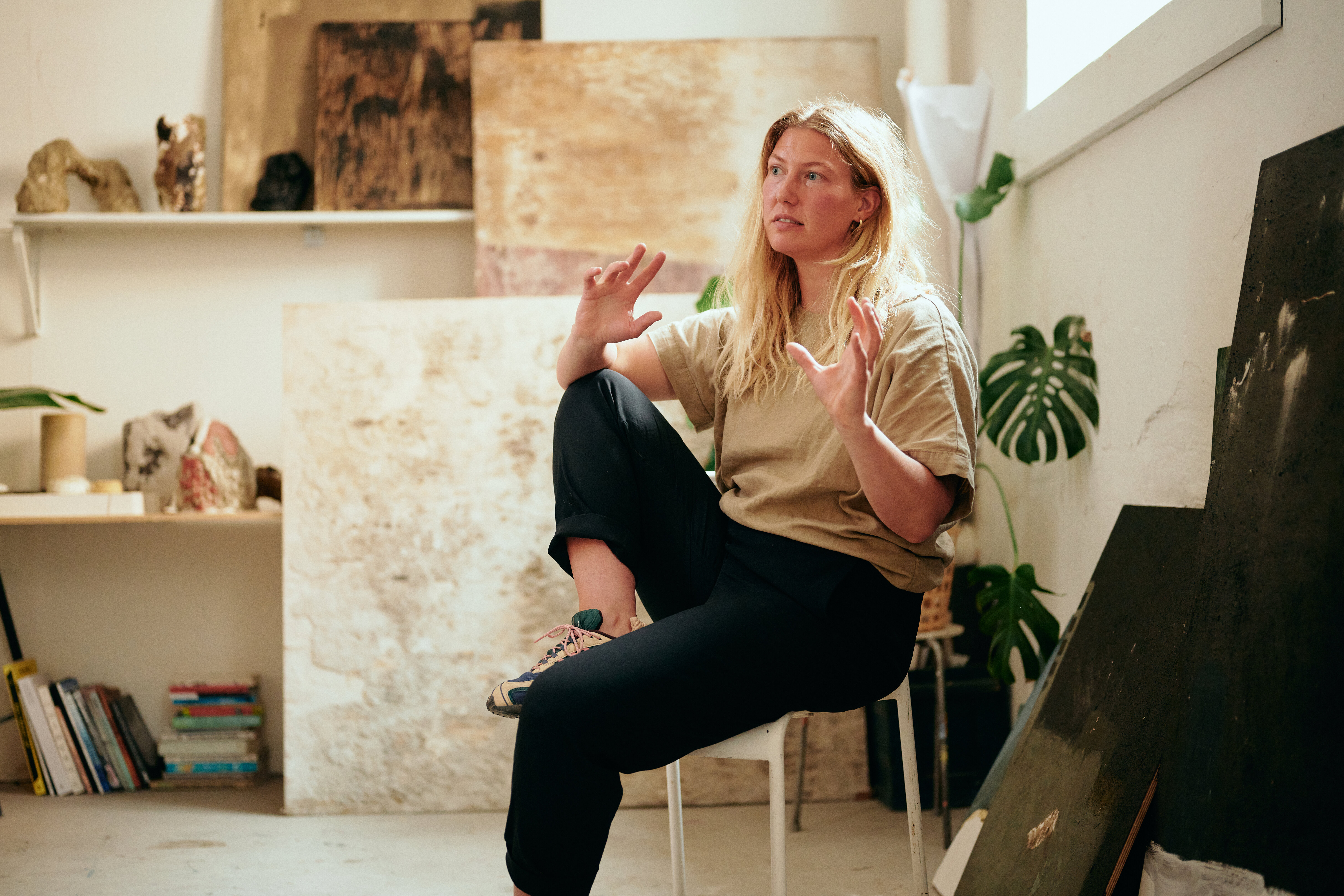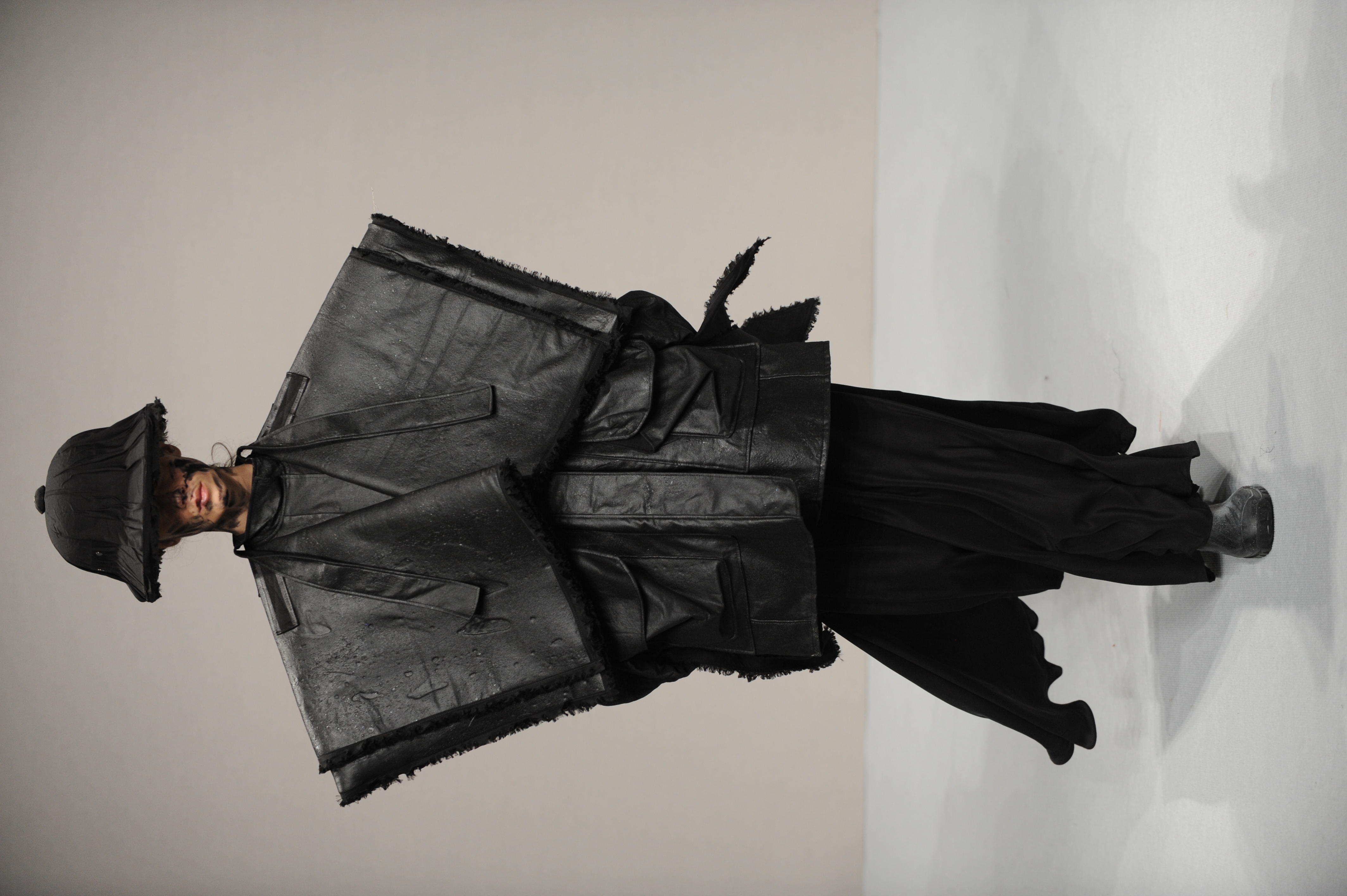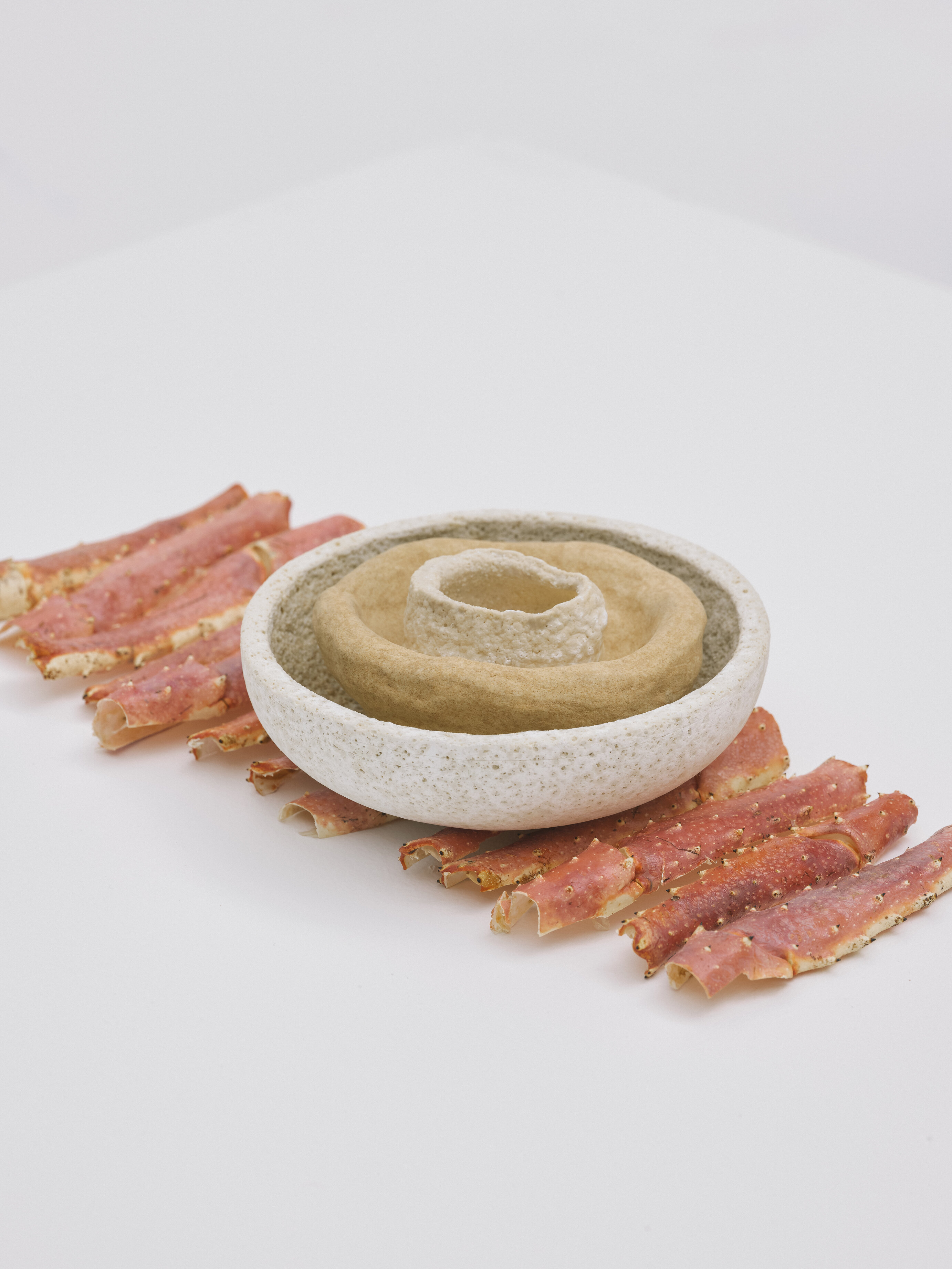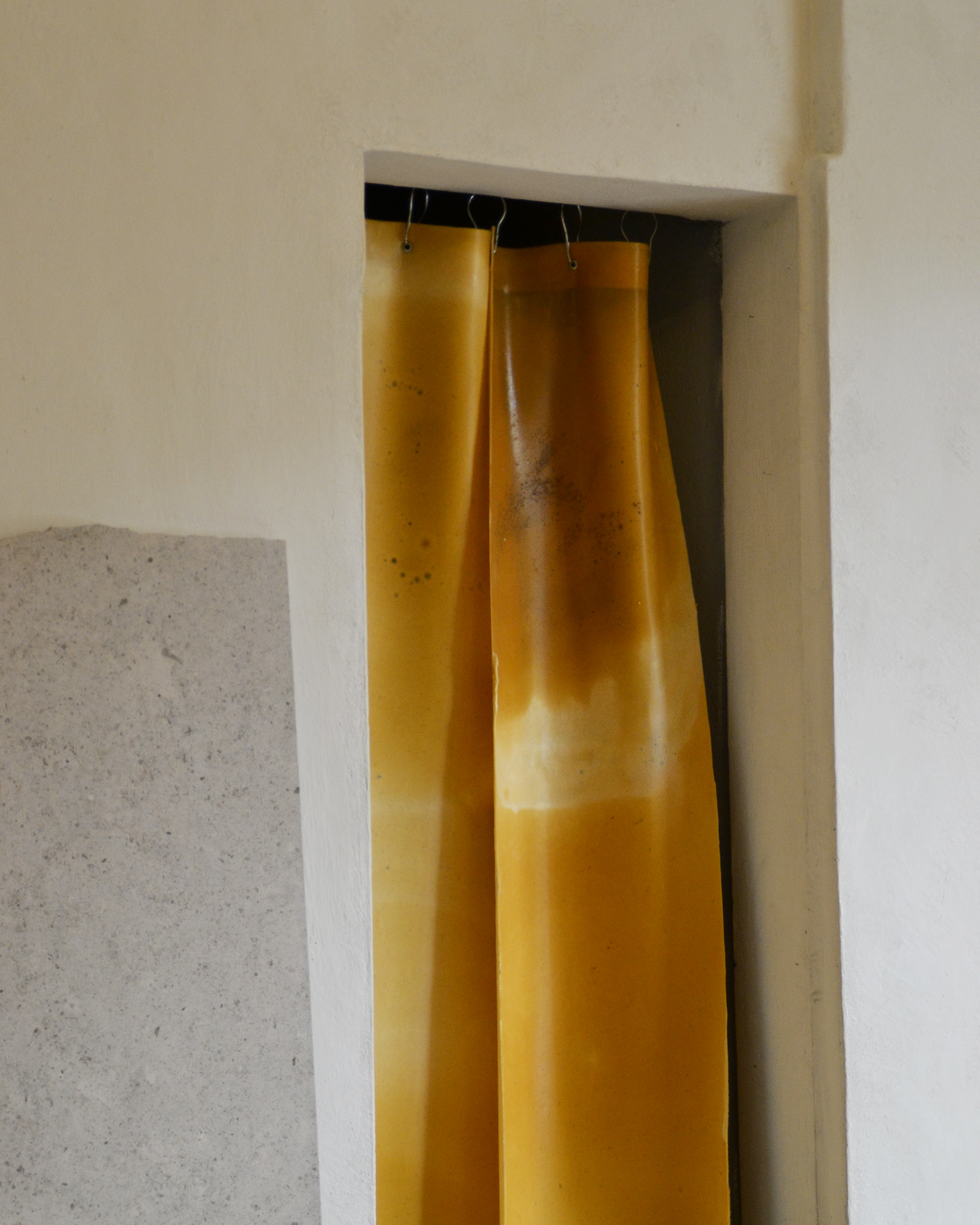Bonnie Hvillum, the founder of Natural Material Studio, is designing materials for the future. Some of her studies will be presented at the A@W Copenhagen event on 7 & 8 September 2022.
Written by Klaus Hybler

Bonnie Hvillum will present a concept of using natural resources from Danmark at the A@W Copenhagen event.
Photo: © Lars Hauschildt
“Many architects and industrial designers still work in a way in which they are not considering which materials are actually available, i.e. the conventional way of applying materials to design, whereas I try to advocate turning this upside down and work with the materials we have. This is what is called material driven design,” said Bonnie Hvillum, the founder and owner of Natural Material Studio.
According to Hvillum we are too used to walking into a store and choosing materials from the shelves, but in the near future we are going to run out of resources, leaving us without the possibility of walking into a store and choosing what we want.
“We must work with what we have at hand and start thinking alternatively about resources and the alternatives for conventional building materials.”
Since 2018 the Natural Material Studio has been working with international design, research, and consulting companies that work towards changing our relation and perception of materials. Renewable and circular aspects are in the center of attention, with science, biology, chemistry, design, and art as their building blocks.
“We want to create a future that is fully centered around circular design principles; reuse, recycle, renew, and rethink.”
Designing materials for the future
Hvillum had an education as interactive designer, which implies a strong focus on the interaction between humans and materials.
“I learned to design interactive user experiences, and the playful game of using what I have with sustainability in mind has always been a great part of me. Establishing my studio on these pillars – immersive interactions based on residue - lead me to Natural Material Studio. I see my working approach as very playful, with a naive beginner’s mind, but also as very visionary, constantly exploring the potential in the things we overlooked to create highly sensory experiences.”
The process often implies walking through pristine landscapes searching for special material compositions and for Hvillum it always comes down to the user and the experience with the material, and how the user relates to it.
“The type of materials I design does not have a long history with humans yet. So compared to wood, with which we have a long history and know what it is and thereby trust, it is a longer journey with new materials and a slow process getting them into people’s homes and minds. We have to build these relations first, they do not exist yet.”

If you take a closer look the charcoal composite shows craters and air pockets in the surface of the fabric.
Photo: © NMS/Moskal
Shell ware for restaurant Noma
The studio has worked with and for several international well-known companies such as Frama, Leeds University, Empirical Spirits, fashion labels such as Canadian Moskal Designs and the three-Michelin-star restaurant Noma in Copenhagen.
Hvillum examined shell leftovers at Noma, dealing with the technical properties and aesthetic qualities of the shells. She discovered that the main part of some shell types, calcium carbonate, could be turned into calcium oxide, which is equivalent to bone ash, and after a long experimental process the Natural Material Studio developed a new type of clay based on leftover Nordic seashells.

Hvillum discovered that the calcium carbonate in the seashells could be turned into bone ash.
Photo: © Peter Vinther
Several types of clays and glazes began to emerge during the research phase. Many new and interesting expressions were discovered, such as coral-like and unglazed clay structures. This work using shells as a base in both clays and glazes holds so much potential – not only technically, but also aesthetically. To explore the materials further, the studio teamed up with Danish ceramist Esben Kaldahl to bring the material further into form and concept.
As part of the visual presentation of the different clay types and documentation of the research, the studio also developed a biodegradable seaweed textile serving as a complementary tablemat or cloth and in turn supporting the materiality of the work.

'Alger' is an ongoing material research, where we explore the potential of seaweed and algeas as a potential future bio textile.
Photo: © Paolo Galgani/ Through Objects/ NMS
Curious to find out more about the material exhibition from Natural Material Studio at ARCHITECT@WORK Copenhagen? Click here for more information.